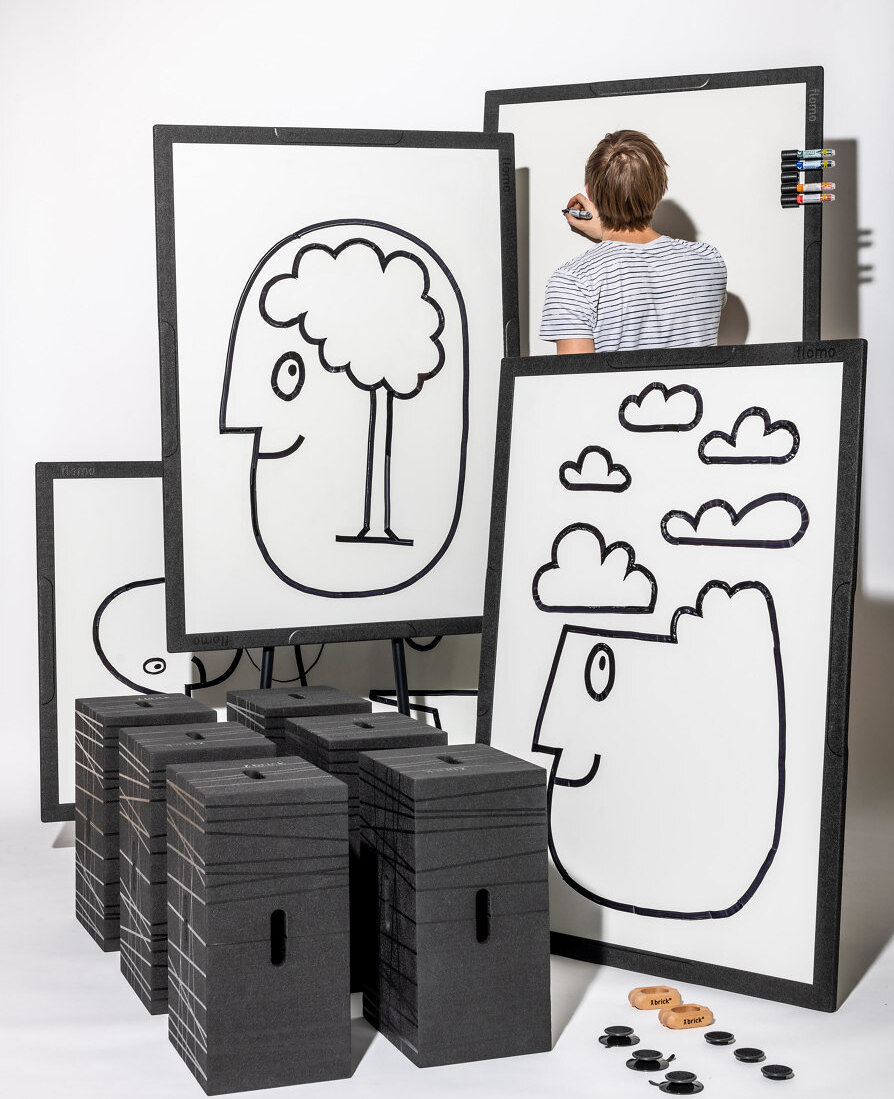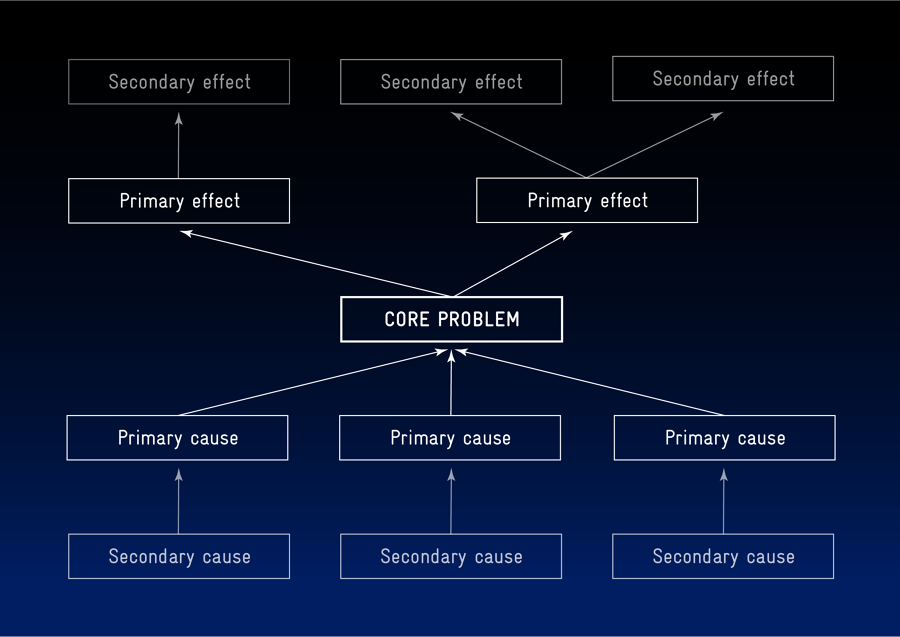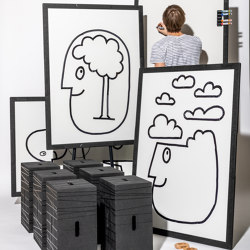Design thinking strategies for elegant solutions, whatever the job
Texto por Katharina Schwarze
24.03.22
Architects and designers possess problem-solving skills that also make them extremely valuable to companies outside of the A&D sector. The key term here is design thinking…
The Design Thinking method enables people to find solutions, but first of all to ask the right questions

The Design Thinking method enables people to find solutions, but first of all to ask the right questions
×Berlin in the early 2000s: I had just graduated from high school and was taking a taxi home one evening. Chatting, the driver asked me what I wanted to do with my life and I replied that I would maybe become an architect. He was thrilled with my answer, exclaiming that he too, in fact, was an architect! I can't deny that this incident didn't cause me to have a rethink...
It's true, of course, that not every architecture student becomes an architect and not every design student becomes a designer in the classical sense. However, those students of architecture who cannot or do not want to follow a traditional career path have many other options open to them than becoming taxi drivers. Budding architects and designers are equipped with a toolkit of skills and problem-solving strategies that are highly valuable in a broad variety of professions.
The key term here is design thinking. So-called design thinking strategies have become increasingly popular in recent years, whether in business, government or social organisations, as a means of breaking down problems that exist within complex systems. But what exactly is it?
Tool and work environment all at once: flomo by Westerman is on hand wherever thoughts need to flow and where ideas are born and nurtured

Tool and work environment all at once: flomo by Westerman is on hand wherever thoughts need to flow and where ideas are born and nurtured
×Origin of design thinking
First things first: it is not possible to find a uniform definition of design thinking, nor is it possible to define a clear origin. However, a good starting point is provided by 'The Sciences of the Artificial', a book by the American social scientist and Nobel Memorial Prize winner Herbert Simon from the late 1960s.
‘To design is to devise courses of action aimed at changing existing situations into preferred ones’ – Herbert Simon
Simon proclaims that design is a way of thinking: ‘To design is to devise courses of action aimed at changing existing situations into preferred ones.’ So far, so good – the word 'far' here, incidentally, being an apt one, as this approach can be applied to more or less any area of life. The design thinking process that architects and designers are probably familiar with is the same, but its subject is by no means limited to the design of products or buildings.
Problem solving
But how does this supposedly omni-functional process work? And how do I transform an existing situation into an improved one? First of all, it is about looking at problems as interrelated systems in order to arrive at a more refined solution. Problem tree analysis helps us to visualise this.
Problem tree analysis: The challenge is to get to the root of potential problems and Design Thinking was developed to assist in this process

Problem tree analysis: The challenge is to get to the root of potential problems and Design Thinking was developed to assist in this process
×Problem tree analysis
The metaphor of the tree trunk is very illustrative here. In the centre, the tree trunk stands for the actual problem. Above it are the effects of the problem that are visible to all. Below, under the ground, so to speak, and not immediately visible, are the causes. The challenge here is to get to the fundamental cause, or in this case, the root of the potential problem, and design thinking should be able to assist us in this.
The five phases of the design thinking process
In the first phase (empathize), the team gathers information – through interviews, observations and direct experience. Only in the second phase (define) is the actual problem formulated on the basis of data collected.
In phase three (ideate), ideas are collected. No idea is too absurd to write down. Only those who think outside the realm of what is initially realistic and obvious can come up with truly innovative ideas. A clear time limit with a fixed deadline is the only limit that should be set for this phase.
Instead of rushing to a solution and implementing it in a costly and time-consuming way, the motto here is 'fail often and early'
The most promising idea is selected and implemented in phase four (prototype). It is important to use uncomplicated, non-cost-intensive prototypes. In phase five (test), end customers test the prototype and give feedback. Based on these tests, one goes back to phase four, or, depending on the feedback, to phase three and carries out the steps again until one receives satisfactory feedback in phase five.
Instead of rushing to a solution and implementing it in a costly and time-consuming way, the motto here is 'fail often and early.' This way, you get a product that puts the user at the centre. design thinking is an iterative rather than a linear process.
Design thinking can be divided into five phases and represents an iterative rather than a linear process

Design thinking can be divided into five phases and represents an iterative rather than a linear process
×The design thinking environment
The design thinking method, therefore, relies on clearly defined steps for idea generation, ideally in interdisciplinary and diverse teams, in order to obtain the most diverse approaches possible. Equally as important as having the right process and the right people is being in the right environment.
The keyword here is visualisation and it is also vital to have the corresponding visualisation tools: Visualising the process is important insofar as cognitive processes take place in a visual way. Visual perception is anything but passive, so you could say seeing is thinking.
Post its and whiteboards are perhaps the least complicated way to bring ideas to the fore. For advanced users, however, there are also complete, space-creating furniture systems that support the whole process, such as the Design Thinking Line by System 180 or the flomo design thinking set by Westermann for multidisciplinary, self-organising teams of varying compositions and sizes.
Designed for the needs of agile teamwork: System 180's Design Thinking line was developed together with the School of Design Thinking at the Hasso Plattner Institute in Babelsberg

Designed for the needs of agile teamwork: System 180's Design Thinking line was developed together with the School of Design Thinking at the Hasso Plattner Institute in Babelsberg
×Conclusion
Strained, unclear thinking when looking for a solution naturally hinders the problem-solving process. The design thinking method helps to structure this process, not least by encouraging us to ask the right questions, and is a valuable tool for people working in environments where innovation is in high demand.
Anyone looking for alternative career paths after studying architecture or design can certainly become an excellent taxi driver with this knowledge at their disposal, but those who are clever about it can also play a really decisive role in the development of innovations in a variety of exciting companies or organisations beyond the A&D realm.
© Architonic
Head to the Architonic Magazine for more insights on the latest products, trends and practices in architecture and design.







